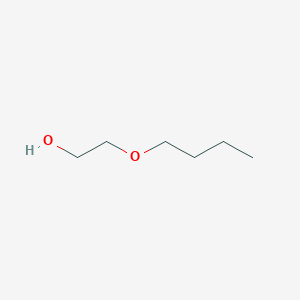-
Categories
-
Pharmaceutical Intermediates
-
Active Pharmaceutical Ingredients
-
Food Additives
- Industrial Coatings
- Agrochemicals
- Dyes and Pigments
- Surfactant
- Flavors and Fragrances
- Chemical Reagents
- Catalyst and Auxiliary
- Natural Products
- Inorganic Chemistry
-
Organic Chemistry
-
Biochemical Engineering
- Analytical Chemistry
- Cosmetic Ingredient
-
Pharmaceutical Intermediates
Promotion
ECHEMI Mall
Wholesale
Weekly Price
Exhibition
News
-
Trade Service
On November 30, the Ministry of Ecology and Environment held a regular press conference in November.
Now, it has been nine years since my country first launched carbon emission trading pilots in 7 provinces and cities including Beijing and Tianjin.
The initial distribution is mainly free
Since the total amount of carbon market needs to be allocated to enterprises through a certain proportion, market trading rules will largely determine the acceptance and final implementation effect of carbon trading rights on the enterprise side.
"In the allocation of carbon emission rights allowances, one allowance is equivalent to one ton of carbon dioxide equivalent.
In 2011, my country launched carbon emission trading pilot projects in 7 provinces and cities, including Beijing, Tianjin, Shanghai, Chongqing, Guangdong, Hubei and Shenzhen.
However, Lin Boqiang, dean of the China Energy Policy Research Institute of Xiamen University, said that since the "Management Measures" are uniformly applicable across the country, Guangdong should return to the state of free quotas after landing.
However, not all companies can obtain free credits and are included in the management of the national carbon emissions trading market.
Opportunities of "Wind and Light Enterprise"
At a regular press conference held by the Ministry of Ecology and Environment in October, Li Gao, Director of the Department of Climate Change Response of the Ministry of Ecology and Environment, introduced that as of August this year, my country’s pilot provinces and cities have covered nearly 3,000 key emission units and accumulated quotas.
The transaction volume is about 406 million tons of carbon dioxide equivalent, and the transaction volume is about 9.
28 billion yuan.
"For companies in different industries, the effectiveness of policies can be divided into two.
" Lin Boqiang said that for "wind and light companies", it means the concentrated growth of their carbon capital and increase new profits for the company.
Possibly; but for companies such as traditional fossil energy, expanding production capacity means saving energy and reducing emissions or purchasing carbon emission indicators.
The "wind and solar enterprises" mentioned by Lin Boqiang mainly point to renewable energy enterprises such as wind power and photovoltaic power generation.
According to estimates, a company emits 1 ton of carbon dioxide per year, and it is necessary to install a photovoltaic station above 1.
1kW to achieve carbon neutrality.
From the perspective of existing policies, carbon emission rights trading can bring 1.
3-7.
4 cents per kilowatt-hour of electricity to wind power and photovoltaic projects.
Additional benefits.
Under the carbon emission trading mechanism, how should traditional energy-consuming enterprises reform? According to the "Administrative Measures", the newly-added provisions on the offset mechanism stipulate that the country's certified voluntary emission reduction (CCER) can be used to offset no more than 5% of the verified emissions, and the CCER should come from outside the boundaries of the key emission unit organization.
Emission reduction projects.
The aforementioned CCER project refers to obtaining carbon offset credits through the development of projects with emission reduction or increased sink benefits, allowing relevant companies to use carbon offset credits to fulfill their own carbon emission reduction obligations.
Taking the "Haining Jingyuntong 50MWp Distributed Photovoltaic Power Generation Project" as an example, according to China's voluntary emission reduction trading information platform, it uses rooftop resources for solar power generation, with an average annual power generation of 46376MWh instead of thermal power generation, reducing greenhouse gas emissions by 38,010 tons per year.
After being developed into a CCER project, it can increase the owner's income by about 1 million yuan each year.
According to available data, as of the end of June 2017, the National Development and Reform Commission has announced a total of 2,856 CCER approved projects, 1047 registered projects, and 287 emission reductions registered projects.
According to the plan, the model will gradually expand from the power generation industry to the building materials, nonferrous metals, steel, petrochemical, chemical, paper, aviation and other industries in the future.
CCER project rules still need to fill up the vacancy
It should be noted that, for traditional enterprises that consume a lot of carbon, although CCER proposes a solution of "exchanging projects for carbon to offset credits", its implementation is not once and for all for enterprises.
Haitong Securities pointed out that CCER trading is a powerful supplement to carbon allowance trading, but its access volume still needs to be designed reasonably.
Excessive liberalization of CCER entry will have an impact on the carbon allowance market, weaken the effectiveness of the allowance and reduce the endogenous motivation of enterprises to reduce emissions; if too little, the promotion of CCER on the carbon market cannot be fully utilized.
Looking back on the past history of the CCER project system, it has caused concern due to market chaos and irregularities.
In March 2017, the National Development and Reform Commission issued an announcement to suspend the acceptance of filing applications for voluntary greenhouse gas emission reduction projects.
As the CCER project review agency, the relevant person in charge of Guangzhou Dongrunfa Environmental Resources Co.
, Ltd.
once said in an interview that the supply of CCER projects on the market is too much and the demand is limited.
Compared with the promotion of trade, the country is more inclined to restrict project filing, Increase restrictive conditions to reduce supply.
At the same time, Zhou Jiemat, an assistant researcher at the Central University of Finance and Economics International Institute of Green Finance, believes that because CCER must be used to offset "verified emissions", this may conflict with the "double random, one open" in the "Administrative Measures", if Companies wishing to use the CCER project for offsetting have not undergone a random verification process, or the offsetting process will become more cumbersome.
This should be further clarified.
In addition, the “Administrative Measures” stipulates that the key emission units participating in the national carbon emission trading market shall not repeatedly participate in each carbon trading pilot market.
Zhou Jiemat pointed out that it is necessary to speed up the formulation of detailed rules and do a good job in linking the pilot projects with the national carbon market.
From the pilot carbon market to the national carbon market, the pilot carbon market has been included in the main body’s current quota carry-over issues, as well as the different carbon prices of different carbon markets.
For the pilot carbon market quotas to the national carbon market.
Market quotas should be converted, transitioned, or cancelled, and how to give rewards to companies that have participated in transactions and made emission reduction efforts in the pilot.
Further plans need to be worked out in the future.
Transfer from: People's Daily Online







